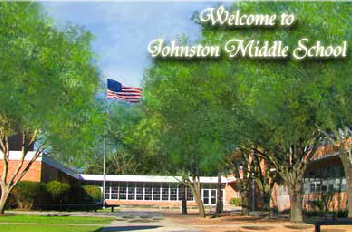 Middle school students are doing research on the International Space Station? You better believe it!
Middle school students are doing research on the International Space Station? You better believe it!
“Insulin’s Molecular Structure in Microgravity” and “Hepatocyte Development in Bioscaffolds Infused with TGFB3 in Microgravity” are both titles of experiments developed by students from Johnston Middle School, in Houston, Texas.
For proof of the inspirational impact of the International Space Station, you need only speak to the educators of the students participating in the Student Spaceflight Experiments Program, or SSEP. The program offered 41,200 students from around the nation the chance to propose and design a microgravity experiment with the chance of having their experiment flown aboard the space station.
You may read more about this story at www.nasa.gov/mission_pages/station/research/news/SSEP.html.
See how you can inspire your students by getting them involved in a simulated International Space Station experience. Log in to the NASA Explorer Schools Virtual Campus website and check out the featured lesson Engineering Design Challenge: Lunar Plant Growth Chamber and the NASA Now program Exercise Physiology: Countermeasures.
 NASA has launched a new video series called Destination Innovation that will air on NASA Television. The series is featured on the agency’s website, YouTube, Facebook and NASA’s apps for iPhone®, iPad® and Android™.
NASA has launched a new video series called Destination Innovation that will air on NASA Television. The series is featured on the agency’s website, YouTube, Facebook and NASA’s apps for iPhone®, iPad® and Android™.
 There are thousands of comets and asteroids in our solar system. When these objects enter Earth’s neighborhood, scientists classify them as Near Earth Objects. Senior Research Scientist Don Yeomans tells us where they are, how big they are and if they pose a threat to our planet.
There are thousands of comets and asteroids in our solar system. When these objects enter Earth’s neighborhood, scientists classify them as Near Earth Objects. Senior Research Scientist Don Yeomans tells us where they are, how big they are and if they pose a threat to our planet. Give your students the opportunity to ask questions of a NASA oceanographer and climate scientist. Dr. Josh Willis is an oceanographer and climate scientist at the Jet Propulsion Laboratory in Pasadena, Calif. He was the Deputy Project Scientist and a member of the science team on Jason 1 and 2. Willis is currently the Lead Project Scientist for the Jason 3 project.
Give your students the opportunity to ask questions of a NASA oceanographer and climate scientist. Dr. Josh Willis is an oceanographer and climate scientist at the Jet Propulsion Laboratory in Pasadena, Calif. He was the Deputy Project Scientist and a member of the science team on Jason 1 and 2. Willis is currently the Lead Project Scientist for the Jason 3 project. Middle school students are doing research on the International Space Station? You better believe it!
Middle school students are doing research on the International Space Station? You better believe it! Astrophysicist Ann Hornschemeier explains how NASA’s Nuclear Spectroscopic Telescope Array, or NuSTAR, uses high-energy X-rays to search for and take pictures of the densest, hottest and most energetic regions in the universe!
Astrophysicist Ann Hornschemeier explains how NASA’s Nuclear Spectroscopic Telescope Array, or NuSTAR, uses high-energy X-rays to search for and take pictures of the densest, hottest and most energetic regions in the universe!